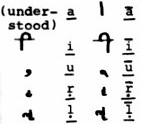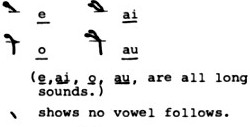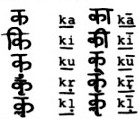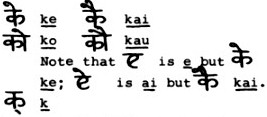|
|
||||||||||
|
Sukhavativyuha |
||||||||||
|
“Layout of the Land of Happiness” --By Sramanerika Heng Hsien |
||||||||||
|
Sukhavativyuha is the short title for The Buddha Speaks of Amitabha Sutra.1 There are two sutras by this title, one long and one short. We’ll read the shorter one, of a length convenient to memorize and chant.2
The Sutra describes the Western Paradise of Amitabha Buddha, which
is called in Sanskrit
If one recites this Buddha’s name, saying constantly Namo
mitabhabuddhaya, Homage to the Buddha Amitabha, he can be reborn in
the Pure Land Sukhavati, and witness for himself the splendid adornments
described in this Sutra. The Buddha Speaks of Amitabha Sutra was spoken by the Buddha without anyone’s request. But, you say, we always hear;
Dharma does not arise of itself; In general, because the Buddhadharma is spoken to meet the needs of living beings, someone must ask to hear a given sutra before it is explained. The Buddha spoke the Amitabha Sutra although no one had asked for it because no one knew anything about the principle of its teaching, so no one could request it. Previous lessons have described the sounds and writing system for Sanskrit. Now we will look at these sounds in more detail. The unit of discrimination in Sanskrit is the syllable, or aksara, ‘imperishable’ which we’ve been learning to write. The title Sukhavativyuha divides into six aksaras represented by six letter-units:
In
Sanskrit each vowel counts for one syllable, and the surrounding
consonants 'adorn' that vowel. The letter s is given as the
syllable In the alphabet, the fourteen Sanskrit vowels are written as full letters. Those large forms are only used when you write the letters by themselves, or when you write a word which begins with a vowel. Otherwise, after any consonant, you use the shortened forms shown below:
Here
is how you write the letter
The same signs are added to any Sanskrit consonant.
Consequently in the sutra title
In THE SYLLABLE The Sutra's title then consists of six sounds written as six characters or units. It is made up of the two words sukhavati 'land of bliss' and vyuha 'arrangement'. These two words together form one phrase and the phrase as a whole has one meaning 'layout of the Land of Happiness'. This is one analysis of the title. You should now be ready to decipher these words from next issue's lesson:
Answers to last issue's test:
NOTES: 1Corresponds to the title of the Chinese translation of this sutra, Sanskrit Buddhabhasita-amitabha-sutra, done by the Venerable Kumarajiva whose biography appears in VBS #23. An English translation of this sutra from the Chinese by Upasaka I Kuo Jung is found in VBS #9. The Sanskrit text will follow the Muller-Nanjio edition, Anecdota Oxoniensia, Aryan Series, Vol. I, Part III, Clarendon Press, 1883. 2The merit from memorizing and reciting this Sutra is inconceivable and it may be used to cross over departed friends and relatives to a favorable rebirth. Notice to our ReadersAfter successful completion of the second Volume of Vajra Bodhi Sea, the staff would like to thank the many subscribers and patrons for their generous assistance. We are especially grateful for the continuous contributions of money, publicity, effort and encouragement. We consider the good feeling generated through your support of Vajra Bodhi Sea one of the more valuable results of our work. Thank you.
|
||||||||||



